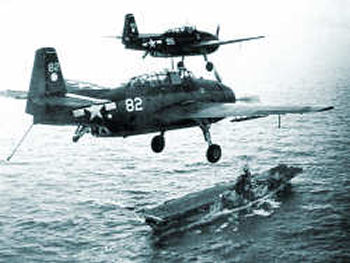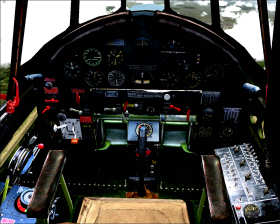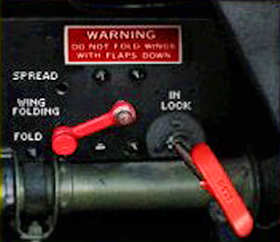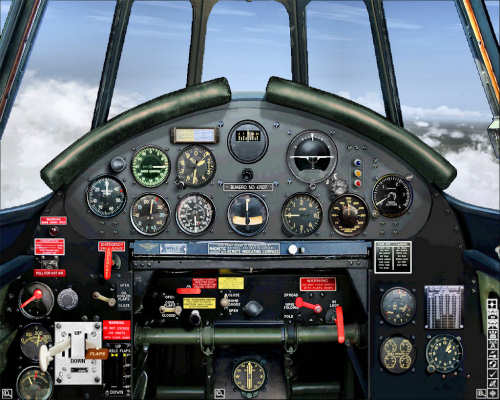Navy
Warplane Lost for 62 Years Found in Lake Washington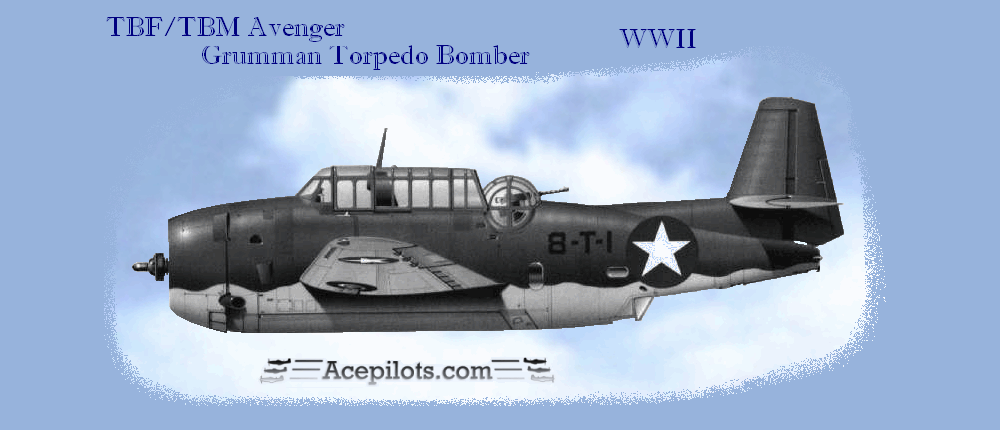 On
August 17, 1942 a Grumman TBF-1 Avenger and a Grumman F4F Wildcat
experienced a mid-air collision over
|
||||||||
VIEW DIVING HISTORY OF SIMILAR PLANES FM-2 WILDCAT or SB2C HELLDIVER MORE BELOW |
||||||||
|
Grumman's first torpedo bomber was the heaviest single-engine aircraft of World War II, and it was the first design to feature a new wing-folding mechanism created by Grumman, intended to maximize storage space on an aircraft carrier; the F4F-4 and later models of Wildcat received a similar folding wing and the F6F Hellcat (both designed by Grumman) would employ this mechanism as well. The engine used was the Wright R-2600-20 (which produced 1,900 horsepower). There were three crew members: pilot, turret gunner and radioman/bombardier/ventral gunner. One .30-caliber machine gun was mounted in the nose, a .50 caliber gun was mounted right next to the turret gunner's head in a rear-facing electrically powered turret, and a single .30 caliber hand-fired machine gun mounted ventrally (under the tail), which was used to defend against enemy fighters attacking from below and to the rear. This gun was fired by the radioman/bombardier while standing up and bending over in the belly of the tail section, though he usually sat on a folding bench facing forward to operate the radio and to sight in bombing runs. Later models of the TBF/TBM dispensed with the nose-mounted gun for one .50 caliber gun in each wing per pilots' requests for better forward firepower and increased strafing ability. There was only one set of controls on the aircraft, and no access to the pilot's position from the rest of the aircraft. The radio equipment was massive, especially by today's standards, and filled the whole glass canopy to the rear of the pilot. The radios were accessible for repair through a "tunnel" along the right hand side. Any Avengers that are still flying today usually have an additional rear-mounted seat in place of the radios, which increases crew to four. Built around the 1700 horsepower Wright R-2600-8 engine, a 14-cylinder double row radial, the new TBF featured: horsepower Wright R-2600-8 engine, a 14-cylinder double row radial, the new TBF featured:
Weight Empty: 4880 Kilograms / 10.758 lbs. Weight Loaded: 7876 Kilograms / 17.363 lbs. Armament: 1 x 7.7mm / 30-caliber machine-guns, over the engine, 1 x 12.7mm / .50-caliber in powered weapon turret, 1 x 7.7mm in tunnel. One Mk13 torpedo / 2000lbs bombs / depth charges Top Speed: 270 mph Range: 1105 miles Ceiling: 23000 feet First combat - Midway: Only six TBF's actually entered front-line, combat service in time for the critical Battle of Midway on June 4, 1942. These planes, attached to VT-8, flew up to Midway Island itself three days before. Commanded by Lieutenant Langdon K. Fieberling, none of the TBF pilots had ever been in combat, and only a few had ever flown out of sight of land before. (Most of this squadron, the famed Torpedo Squadron Eight, flew the outmoded Douglas Devastators from the carrier Hornet.) But both new and old were nearly wiped out. Lieutenant Fieberling's six TBFs reached the Japanese fleet at 7:10 AM, dropped to low altitude and bore on toward the carriers. Zeros swarmed around the vulnerable torpedo planes. Two TBFs were destroyed in the first attack, followed by three more. Realizing that he could not reach the carriers, Ensign Albert K. Earnest loosed his torpedo at a cruiser, then broke away with two Zeros after him. Earnest flew his shot-up TBF back to Midway, navigating "by guess and by God." Earnest's was the only TBF to return, with nothing but the trim tab for longitudinal control, with one wheel and the torpedo bay doors hanging open. Radioman 3rd Class Harrier H. Ferrier was injured and Seaman 1st Class Jay D. Manning, who was operating the .50 caliber machine gun turret, was killed during the attack.
"Wing and a Prayer", a 1944 production was most likely shot with USS Enterprise CV-6 Director
Henry
Hathaway spent several weeks aboard an actual aircraft carrier, some
even from USS
Hornet CV-12, filming genuine combat scenes. Many of these
authentic sequences appear as background footage in A Wing and a
Prayer; sometimes the process work is convincing, sometimes it isn't,
but please remember that this film was made long, long before the
advent of computer technology.
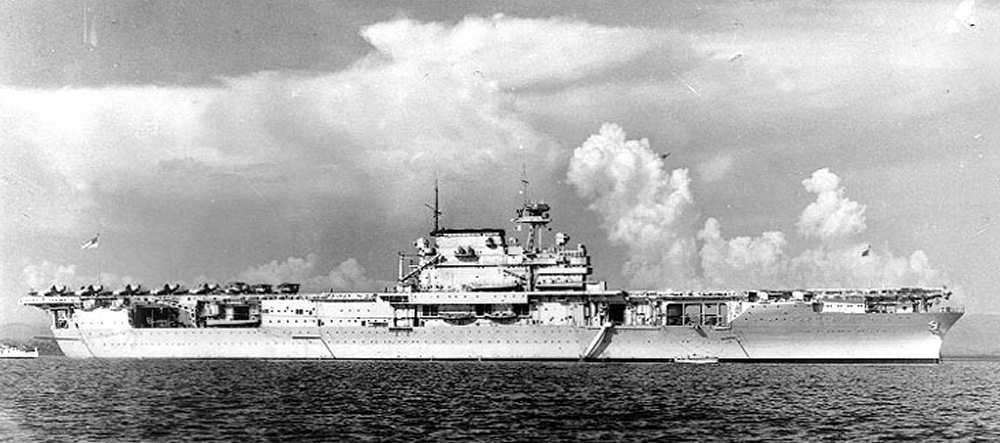 USS Enterprise CV-6 decommissioned on 17 February 1947 and Scrapped in 1958 USS Yorktown CV-5 was sunk at Midway June 1942 USS Hornet CV-8 - was sunk 27 October 1942 All three had the same design and lines - being Yorktown Class. Overall 11 carriers had 'athwartships catapults' on their hangar decks. Most were removed when ships had refits, by 1943 all were gone except USS Hornet. Synopsis Three months
after
the Japanese attack on Pearl Harbor,
American citizens wonder why the U.S. Navy has not yet retaliated. Navy
officials, hoping to lure the Japanese Navy into a trap, decide to send
one carrier on a decoy mission while assembling the majority of U.S.
forces at Midway. The ship chosen, Carrier X, receives orders to sail
the Pacific and not engage the enemy, on the water or in the air, in
order to lull the Japanese into a false sense of security. Carrier X's
captain, Waddell, and air officer, Cmdr. "Bingo" Harper, watch as Lt.
Cmdr. Edward Moulton of Torpedo Squadron 5 flies in with his pilots:
Ensigns Malcolm Brainard, Gus Chisholm, "Lovebug" Markham, Hans
Jacobson, Chuck White, Paducah Holloway and Hallam Scott, a film actor
who has been nicknamed "Oscar" because of his Academy Award, which he
carries as a good luck charm. Harper is infuriated by Scott's sloppy
landing and wastes no time reprimanding him. The men are then
dismissed, and after settling into their quarters, meet Ensign Charles
"Cookie" Cunningham, who recently received the Navy Cross for shooting
down three Japanese planes. Cunningham, who is still on the injured
list, shyly receives the new men's praise and answers their queries
about combat. Scott, meanwhile, is teased about his fan mail and
questioned about his screen kisses with Betty Grable. Later, Scott's
radioman, Benny O'Neill, discusses Harper with gunner "Beezy" Bessemer,
who is afraid that the tough commander will discover that he is only
sixteen years old. O'Neill promises to watch over the youngster, and
time passes until one day, during a bombing maneuver, Brainard drops a
bomb on the target against orders, and Harper orders Moulton to get his
men in shape or ship out. As the days go by, the men become frustrated
by their orders not to engage the enemy, while Cunningham, who has been
certified to return to active duty, grows increasingly nervous. During
his first run against attacking Japanese aircraft, the terrified
Cunningham crashes his plane into the ocean, and although he and his
crew survive, Harper forbids him to fly again. Other pilots and crew
members are killed during the attack and subsequent encounters, and the
men grow bitter about their orders to stand down. Although Scott's
roommate, Chisholm, is killed, the actor continues his egotistical,
immature behavior, until Moulton warns him that there are no stars on a
carrier, only team players. Finally, Capt. Waddell receives orders to
reveal the Navy's strategy with the men, who are thrilled to hear that
they are to join the main force at Midway. A dangerous battle awaits
them at Midway, and as it will have to be won mostly in the air, the
men grimly prepare. At Midway, Carrier X's crew anxiously listen to the
radio reports as the pilots engage the Japanese in fierce dogfights.
Jacobson and his crew are shot down, and Scott and Beezy hit a Japanese
ship, while Benny is killed. A Japanese submarine targets Carrier X
with a torpedo, but before the weapon can destroy the ship, Cunningham
goes up in a catapult bomber plane and dives into the ocean to
intercept the torpedo. Grateful for Cunningham's sacrifice, the sailors
work hard to repair the carrier's disabled flight deck. After the
battle, a rainstorm begins, and the cloudy conditions prevent Scott and
Beezy from locating the carrier. Due to the presence of the remaining
enemy, Scott cannot risk establishing radio contact, and although
Carrier X's crew can hear Scott's plane as it runs out of gas and falls
into the ocean, there is nothing they can do to help. The enraged men
confront Harper, who prohibited any radio contact with Scott, and
Harper tells them that he is tough on them because he is responsible
for them, and that he could not allow Scott to endanger the ship. Just
then, Harper receives word that a U.S. destroyer has picked up Scott
and Beezy, who turned seventeen that day, and as he goes to post the
next day's orders, Harper expresses his happiness at the men's rescue.
George Bush; Undoubtedly, the most famous man to fly an Avenger was George H.W. Bush, later the 41st President of the United States. He joined the Navy in 1942, and became the youngest naval aviator ever in June, 1943. He flew Avengers with VT-51, from USS San Jacinto. On September 2, 1944 he was shot down over Chichi Jima. While Bush parachuted safely and was rescued, neither of his crewmen survived. Bush earned a DFC for delivering his bombload after his TBF had been hit.
Go To: PLANES PAGE |
